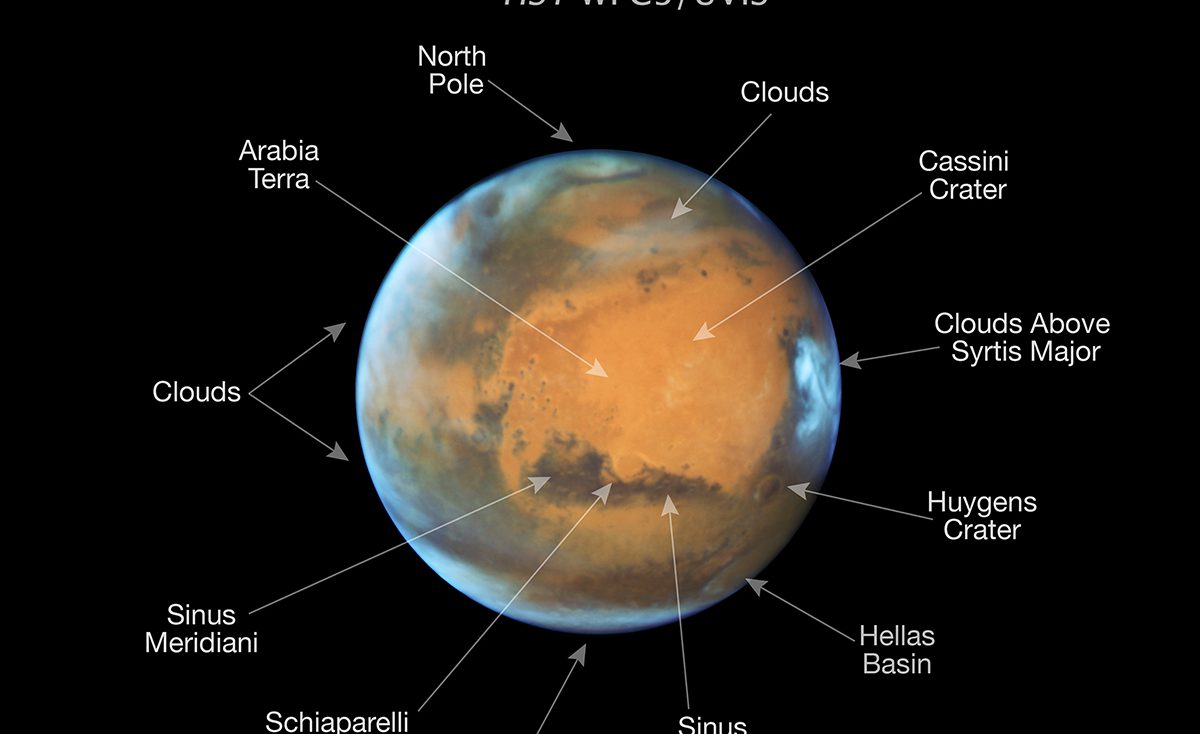Mars Near Opposition by HST
 The Hubble Space Telescope (HST) is more well known for its picturesque views of nebulae and galaxies, but it’s also useful for studying our own planets, including Mars. Hubble imaged Mars on May 12, 2016 – ten days before Mars would be on the exact opposite side of the Earth from the Sun, on May 22. This striking image of Mars, was catputred when the planet was 50 million miles from Earth and reveals details as small as 20 miles to 30 miles across.
The Hubble Space Telescope (HST) is more well known for its picturesque views of nebulae and galaxies, but it’s also useful for studying our own planets, including Mars. Hubble imaged Mars on May 12, 2016 – ten days before Mars would be on the exact opposite side of the Earth from the Sun, on May 22. This striking image of Mars, was catputred when the planet was 50 million miles from Earth and reveals details as small as 20 miles to 30 miles across.
On May 30, Mars will be the closest it has been to Earth in 11 years, at a distance of 46.8 million miles. Mars is especially photogenic during opposition because it can be seen fully illuminated by the sun as viewed from Earth.The biennial close approaches between Mars and Earth are not all the same. Mars’ orbit around the sun is markedly elliptical; the close approaches to Earth can range from 35 million miles to 63 million miles.
They occur because about every two years Earth’s orbit catches up to Mars’ orbit, aligning the sun, Earth, and Mars in a straight line, so that Mars and the sun are on “opposing” sides of Earth. This phenomenon is a result of the difference in orbital periods between Earth’s orbit and Mars’ orbit. While Earth takes the familiar 365 days to travel once around the sun, Mars takes 687 Earth days to make its trip around our star. As a result, Earth makes almost two full orbits in the time it takes Mars to make just one, resulting in the occurrence of Martian oppositions about every 26 months.

- More information: HST Press Release
- Image Caption: This hemisphere of Mars contains landing sites for several NASA Mars surface robotic missions, including Viking 1 (1976), Mars Pathfinder (1997), and the still-operating Opportunity Mars rover. The landing sites of the Spirit and Curiosity Mars rovers are on the other side of the planet.
- Image Credit: NASA, ESA, and L. Frattare (STScI)



